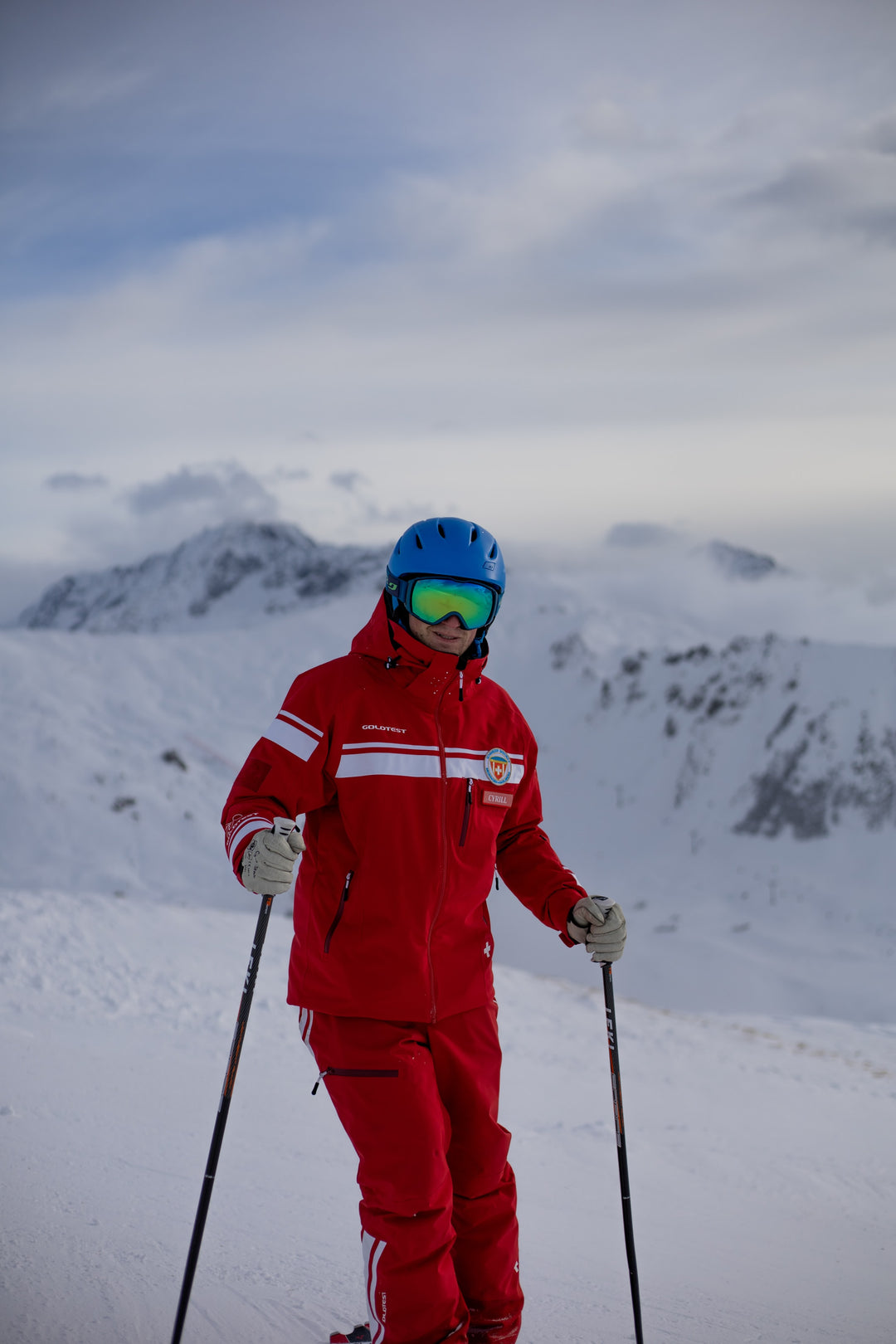The History of Skiing
Through the Snow: The Story of the History of Skis and the Goddess Skadi.
It is hard to believe that a simple piece of split wood would shape the spirit of a region – and yet that is where the story of skis begins. With a rough plank fastened to a foot, humanity learned to silently glide over vast, snowy landscapes. Thus, the ski was born – not as a toy or sport, but as a tool for survival and freedom.
🏔️ Origin and early evidence
The oldest known skis have been found in Russia and date back to around 6300–5000 BC. In Scandinavia, skis have been found in Sweden's Jämtland dating from around 4500–2500 BC, as well as in Norway and Finland from similar time periods. These findings show that people in Northern Europe used skis to get around snowy landscapes long before it became a sport.

Source:History of Skiing: The Beginning – Shawnee Mountain Ski Area
❄️ The Sami People and the Skis
Sami people, the indigenous population of northern Scandinavia, were among the first to develop and use skis systematically. Their skis were often asymmetrical: one long for gliding and a shorter one with fur for grip. Skiing was integrated into their daily life for hunting, travel, and even in spiritual contexts.

Source:Thank the Sami for the skis! - Humanism & Knowledge
⛷️ Sondre Norheim and modern skiing
In the 19th century, the Norwegian Sondre Norheim revolutionized skiing by introducing new bindings and shorter, curved skis. He developed the Telemark turn, a technique that laid the foundation for modern alpine skiing. Norheim won the first national ski race in Norway in 1868 and is considered a pioneer in the sport.
🕶️ The Nordic region's first ski goggles – protection against snow blindness
In the Arctic and Scandinavia, the light is as relentless as the cold. The snow reflects the sun with such intensity that it can cause snow blindness. To protect their eyes, indigenous peoples developed simple but effective protection – narrow wooden frames or bone pieces with slim slits that only allowed a concentrated flow of light to pass through. These primitive snow goggles are early evidence of human adaptation to extreme conditions and constitute an important part of Nordic winter culture. Read more aboutskigoggles history.

🎖️ The Norwegian military and skis
Skiing has been used in military contexts in Norway since the 13th century, when Norwegian soldiers used skis for reconnaissance missions during the Battle of Isen near Oslo. In the 18th century, Captain Jens Emmahausen wrote the first Norwegian ski manual, and from 1767 military ski competitions with cash prizes were held.

🛷 From transport to sport
During the 20th century, skiing became a popular leisure activity and sport. In the USA, the 10th Mountain Division, a military unit consisting of skiers, helped popularize skiing after World War II. Veterans from the unit founded ski resorts and developed equipment, which led to the sport's growth in North America.
🚡 The first ski lift – from foot power to machine
When skiing transitioned from survival to pleasure, new solutions were needed to simplify the experience. In 1908, the world's first mechanical ski lift was built in the German Black Forest – powered by a water wheel that pulled skiers up the slope. It was a technical innovation that transformed the mountains into playgrounds. In 1936, development took a big leap when the USA opened its first chairlift in Sun Valley, Idaho. The lifts enabled mass tourism to the mountains and marked the beginning of skiing's commercial golden age.

Source:The first ski lift in the world • Famous building/monument » outdooractive.com
🎿 Consolidation in the USA: Epic and Ikon Pass
Under the 2000s, the American ski industry has undergone significant consolidation. Vail Resorts launched the Epic Pass in 2008, providing access to multiple ski resorts under a single season pass. Alterra Mountain Company responded in 2018 with the Ikon Pass, which also includes several ski resorts. Together, these two companies now control over 50% of the total lift capacity in the USA, creating a duopoly market.

Source:Epic Pass | Vail Ski ResortandAlterra Mountain Company
🛷 Skadi – the goddess of skis
In Norse mythology, there is the goddess Skadi, who is associated with winter, hunting, and skiing. She symbolizes the importance of skiing in Nordic culture and how deeply rooted this activity is in the region's history.

Source:The Long-Lost Ski Goddess - Mountain Life
Skadi is the legend's first skier - not just a divine metaphor, but a symbol of the ski as part of the northern identity. Some linguists believe that her name inspired the term "Scandinavia," which was once possibly spoken as Skandinavien, or "Skadi's land."
🌍 Skiing today
Today, skiing is a global sport and recreation, with ski resorts all over the world. At the same time, the sport faces challenges such as climate change and the need for sustainable development. Initiatives for environmentally friendly skiing are growing, focusing on reducing carbon emissions and preserving snow conditions for future generations.
🪵 Old Norse roots – the word "ski"
The wordskicomes from Old Norseskíð, which means "split wood" or "wooden stick". A simple word – but loaded with history. It carries millennia of knowledge, journeys across frozen expanses, and the relationship between humans, snow, and silence. Through language, the heritage lives on, from ancient hunters to today's ski tourists.
Source:Ski - Wiktionary, the free dictionary



